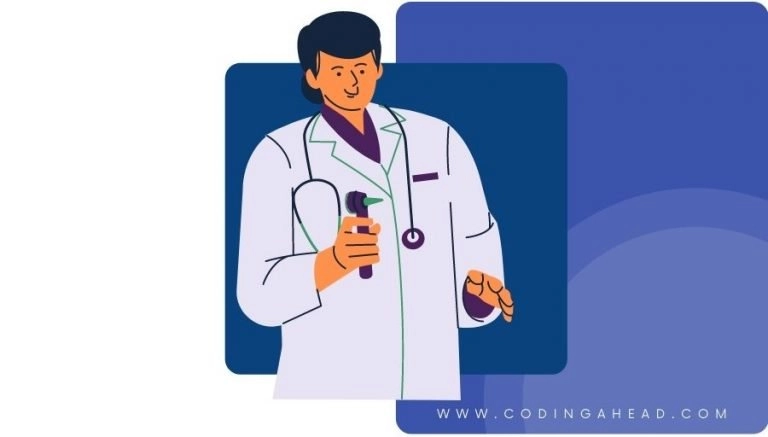How To Use CPT Code 73660
CPT 73660 describes the radiologic examination of the toes, where a minimum of two X-ray views are taken to assess injury, fracture, arthritis, tumor, or congenital abnormalities. This article will cover the description, procedure, qualifying circumstances, appropriate usage, documentation requirements, billing guidelines, historical information, similar codes and billing examples.
1. What is CPT Code 73660?
CPT 73660 can be used to describe the radiologic examination of the toes, where a minimum of two X-ray views are taken to assess various conditions such as injury, fracture, arthritis, tumor, or congenital abnormalities. This code is used when the provider takes at least two X-ray views of one or multiple toes to evaluate the patient’s condition.
2. Official Description
The official description of CPT code 73660 is: ‘Radiologic examination; toe(s), minimum of 2 views.’
3. Procedure
- The provider positions the patient’s toe or toes in a stable position.
- Depending on the situation, the provider takes at least two X-ray views, such as anteroposterior (AP), lateral, or transverse, to capture different angles and perspectives of the toes.
- An X-ray machine sends a beam of radiation through the patient’s toes, and a computer or special film records the images.
- The resulting X-ray images show the bones as white, as they absorb most of the radiation, while softer tissues appear darker.
- The provider reviews the X-ray images to assess for any injuries, fractures, arthritis, tumors, or congenital abnormalities in the toes.
4. Qualifying circumstances
CPT 73660 is used when a minimum of two X-ray views of the toes are taken to evaluate the patient’s condition. This code is appropriate for patients who require radiologic examination of their toes due to suspected injuries, fractures, arthritis, tumors, or congenital abnormalities. The provider must document the specific views taken and the reason for the examination in the patient’s medical record.
5. When to use CPT code 73660
CPT code 73660 should be used when a minimum of two X-ray views of the toes are taken to assess the patient’s condition. It is important to ensure that the provider documents the specific views taken and the reason for the examination to support the use of this code.
6. Documentation requirements
To support a claim for CPT code 73660, the provider must document the following information:
- Specific views taken, such as anteroposterior (AP), lateral, or transverse
- Reason for the radiologic examination of the toes
- Date of the examination
- Signature of the provider performing the examination
7. Billing guidelines
When billing for CPT code 73660, ensure that the provider has taken a minimum of two X-ray views of the toes. If the provider only interprets the radiology service, append modifier 26 to the code. If the provider only performs the technical component, append modifier TC. However, it is important to review payer policies as hospitals may be exempt from appending modifier TC. If the provider performs both the professional and technical components, do not append any modifiers. It is also important to accurately document the number of views taken to support the billing of CPT code 73660.
8. Historical information
CPT code 73660 was added to the Current Procedural Terminology system on January 1, 1990. The code underwent a change on January 1, 2009, where the description was updated to specify a minimum of two views.
9. Examples
- A patient presents with a suspected toe fracture after a sports injury. The provider takes anteroposterior and lateral X-ray views of the toes to assess the extent of the fracture.
- A patient with chronic arthritis in the toes undergoes a radiologic examination. The provider takes anteroposterior and transverse X-ray views to evaluate the progression of the arthritis.
- A patient presents with a toe tumor, and the provider takes multiple X-ray views, including anteroposterior, lateral, and oblique, to assess the size and location of the tumor.
- A newborn baby is born with a congenital abnormality in the toes. The provider takes anteroposterior and lateral X-ray views to evaluate the extent of the abnormality.
- A patient experiences a toe injury in a workplace accident. The provider takes anteroposterior and lateral X-ray views to assess the severity of the injury and determine the appropriate treatment.
- A patient with a history of toe fractures undergoes a routine radiologic examination. The provider takes anteroposterior and lateral X-ray views to monitor the healing process and ensure there are no new fractures.
- A patient presents with toe pain and swelling. The provider takes anteroposterior and lateral X-ray views to assess for any signs of arthritis or other underlying conditions.
- A patient with a family history of toe abnormalities undergoes a preventive radiologic examination. The provider takes anteroposterior and transverse X-ray views to screen for any congenital abnormalities.
- A patient with a suspected toe fracture after a fall undergoes a radiologic examination. The provider takes anteroposterior and lateral X-ray views to confirm the presence of a fracture and determine the appropriate treatment.
- A patient with a history of toe tumors undergoes a follow-up radiologic examination. The provider takes anteroposterior and lateral X-ray views to monitor the size and progression of the tumors.




